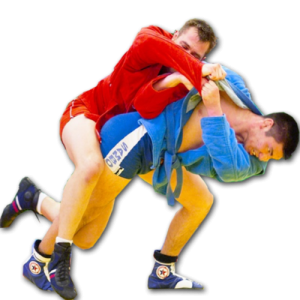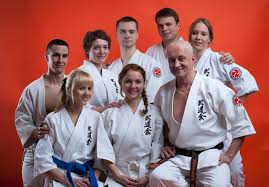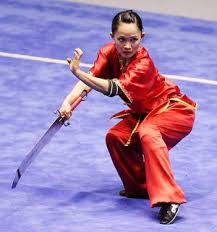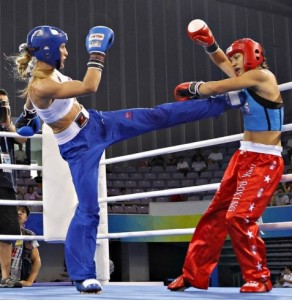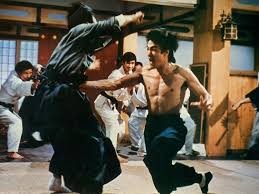Arnis
 Arnis is a Filipino martial art. Already at the beginning of training in such a martial art, you will begin to work with weapons, and only then learn the technique of hand-to-hand combat. In both cases, uniform motor principles are used.
Arnis is a Filipino martial art. Already at the beginning of training in such a martial art, you will begin to work with weapons, and only then learn the technique of hand-to-hand combat. In both cases, uniform motor principles are used.
Arnis is distinguished by its plasticity and speed, “fluid” manner of conducting combat, attacks of the opponent’s limbs, rapprochement during counterattacks with the enemy, movements along triangular trajectories, as well as weight shifts on the front foot.
Arnis de Mano or Arnis adequately means hand defense, that is, the technique of fighting using one or more sticks. Its Spanish name, martial art received due to a historical factor – the Philippines from the XVI century to 1898, were influenced by Spain. In the native language of the Filipinos, “Arnis” sounds like a “trestle”.
Before the Spaniards captured the Philippine Islands, folk martial arts were very common here. The Spanish colonialists did not like this type of activity, and soon, they put a ban on it. But they could not interrupt the transfer of martial arts equipment from generation to generation, since the art of combat was imitated in folk dances and theatrical performances.
After a while, in 1898, the ban on the development of traditional martial arts was lifted by North Americans. Around the same time, the Arnis technique began its rebirth. In 1946, the Philippines declared its independence, and the Arnis martial art received the status of the national style of martial arts and self-defense. Now, the military and law enforcement officers began to teach diverse martial arts techniques, and they also introduced a special physical education program for college and university students.
The Arnis technique teaches four types of stick combat: solo bastok, sinavali, espada-i-dag, aranis kawayan. Arnis’s military equipment is one of the methods of self-defense, where a participant tries to hit the joints of an opponent’s arm with a weapon using a stick, and then strike him in the head or body.
Arnis styles:
Combinat arnis Combatan arnis is one of the styles of martial art of arnis, which was developed by Ernesto Amador Presas.
Combatan, like any other Filipino martial art, begins with the study of weapons. The reason for this was that the knife and machete are an element of the Filipino traditional costume of both men and women. The main base of movements with one or two sticks is built on the training of fighting with a knife, hand-to-hand combat, slaves with improvised items, as well as working with traditional Okinawan and Filipino weapons.
The classic Combatan system includes: Tres Pantos, Dos Pantos, Mano-Mano, Daga Sa Daga, Espada y Daga, Doble Baston and Solo Baston.
A distinctive feature of Combatan is a specific movement system. Foot movements in Combatan using forward, backward and V-shaped movements are based on the national dance of the Filipinos. There are also some movements from Okinawan and Japanese martial arts. The traditional technique and work of Combatan legs has been preserved in other forms of Arnis, such as Sanqueti, Abaniko Dablada, Dag, Espada and many others.
An important distinguishing feature of Combatan is the principle of combining techniques of different types. This principle is specific exercises called palit palit.
Ernesto Amador Presas has perfected the technique to the most understandable and easily digestible by students, and also have become safer for beginners. For this, a standard technique was introduced. Most importantly, Ernesto Presas first introduced the practice of hitting a stick on a stick, and not on the opponent’s hand, as it was before. Such an innovation made it possible to train using all strength and speed without injuring an opponent. After a while, most of the Philippine’s martial arts schools started using this technique.
Such a system was often used by Filipino and American police officers, who confirmed its effectiveness. They confirmed that they could learn to use this style, to withstand a trained boxer, a professional fighter, and even several at once, anyone can do in just one year. Recently, Russian law enforcement agencies have also shown increased interest in this type of art. In the 80s of the last century, the inventor of Combatan art, several times improved the name of this style, until he finally settled on the name “Combatan”.
Escrima Serrada
Today, you can find many versions of the origin of this type of martial art, about its masters and how only a few fighters could resist a large number of opponents and how they won in each fight, despite the fact that they were mortally wounded.
The art of escrima appeared in 1950, along with the emigration of masters who own a stick, unarmed combat equipment and edged weapons in the United States. Today, eskrima is an effective style of weapons and unarmed combat with a stick or Philippine blade. Training begins with training with a stick 62 cm long.
